Welcome to the blog! Today, we're presenting some superb Côte-Rôtie cuvées, as well as the appellation's best vintages. You'll also find details of the finest estates. Enjoy reading and tasting!
More than 50 wines and 15 vintages of Côte Rôtie in stock
Côte-Rôtie wines presentation
Visit Wines from Côte-Rôtie in the Rhône Valley vineyards. Indeed, theCôte-Rôtie appellation is the oldest in the Rhône Valley. Some even refer to it as the "original site of vine cultivation in Gaul". Just a few kilometers south of Vienne, vineyards cling to the steep, south-southeast-facing slopes of the Côte Brune and Côte Blonde on the right bank of the Rhône. More than 230 hectares are planted on the right bank of the Rhône. A historic vineyard, the oldest and most northerly of all the Côtes-du-Rhône. We're still fortunate to be able to preserve this richness in France, as the vineyard almost disappeared in the 19th century. Why was this? It's extremely difficult to work the vines on the different terroirs. Find out more about the great estates of Cote Rotie 2015, Cote Rotie 2016 and Cote Rotie 2017 at the best price on the site. There are two terroirs in Côte-Rôtie The Côte Blonde to the south, composed of gneiss and arzels (clayey sands). And the Côte Brune to the north, composed of iron-rich micaschists. These wines are renowned for their authenticity, quality and richness on the palate. Every wine lover should taste a great Côte-Rôtie. The Côte-Rôtie wine prices have been rising in recent years, but it's still possible to buy them without breaking the bank.
Côte-Rôtie's best vintages and cuvées
Ranking of the best vintages by Robert Parker & The Wine Advocate.
- TOP 1: Domaine E. GUIGAL - La Turque "Cote Brune
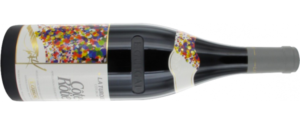
Founded in 1946 by Étienne Guigal in Ampuis, the Domaine Guigal owns an incredible vineyard, where vines and prestigious wines have been celebrated for around 2400 years. Visit domaine Guigal is run by Marcel and Bernadette Guigal. Phillipe, their son, is the domaine's oenologist.
Guigal's La Turque parcel lies on a silico-limestone soil with micaschists whose weathering has resulted in clay soils rich in iron oxides, with a yield of 35hl/ hectare. The cuvée is 93% Syrah and 7% Viognier. The vines are around 25 years old. Let's meet this pure marvel. The color is red/black/ruby with dark highlights. On the nose, red berries, morello cherries and blackberries. Powerful, elegant aromatic intensity. On the palate, the entry is smooth, a harmony is created between the suppleness, concentration and finesse of the tannins. This cuvée perfectly expresses its terroir, and represents the elite of great Côte-Rôtie wines. A great wine for laying down, it will keep for 20 years or more, depending on the vintage.
The best Guigal vintages - La Turque: 2005, 2010, 2009, 2003, 1999
- TOP 2: Domaine E. GUIGAL - La Landonne
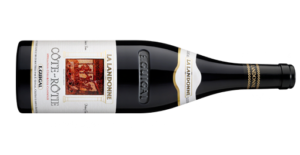
Visit Landonne de Guigal is situated on clay-limestone soil, rich in iron oxides, 100% Syrah and the vines are around 35 years old. Highly appreciated by the greatest tasters and lovers of great wines, this cuvée offers incredible tastings. The color is red/black with dark highlights. The nose reveals notes of black fruit, leather, licorice and aromas of roasting followed by oriental spices. You'll notice a powerful aromatic intensity. On the palate, the entry is surprisingly powerful, with a massive structure of tannins. Rich and concentrated, La Landonne perfectly expresses its terroir, one of the queens of the Côte-Rôtie AOC. A wine for laying down, it can be enjoyed for 30 years or more, depending on the vintage.
The best Guigal - La Landonne vintages: 1990, 1999, 2005, 2012, 2010
- TOP 3: Domaine E. GUIGAL - La Mouline "Cote Blonde
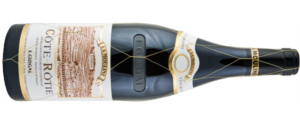
Guigal's Mouline "Cote Blonde" is made up of terraced vines in the shape of a Roman amphitheater. The vines are around 75 years old! It comprises 89% of Syrah and 11% of Viognier. A Guigal legend, a rare pearl for Côte-Rôtie. This cuvée has a ruby-red color with vermilion-red highlights. The nose features red berries, blackberry and violet aromas. On the palate, the entry is very supple and harmonious. The finesse of the aromas and the explosive richness, due to concentration, blend perfectly. A rather feminine wine with a voluptuous texture, silky velvety and very aromatic. Cellar for around 15 years before enjoying at its peak.
The best Guigal - La Mouline vintages: 2005, 2010, 2009, 2003, 1999
- TOP 4: Domaine Stéphane Ogier - Cuvée Belle Hélène
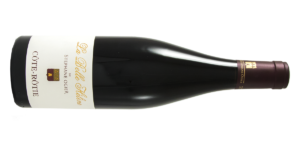
In 1997 Stéphane Ogier joins the family domaine, anchored for seven generations on the slopes of Ampuis. Taking over from his father Michel Ogier, he began to work meticulously on the different terroirs, with the aim of revealing the unique character and personality of these historic sites.
Stéphane Ogier's cuvée La Belle Hélène is a pure marvel, one of the estate's greatest cuvées, but also one of the greatest wines of the Côte-Rôtie AOC, a hallmark of the Côte-Brune region. Made from Syrah, this wine reveals a woody side, a cuvée that shows incredible suppleness, the quality of the fruit is admirable. An inky-purple color, followed by notes of pen ink, graphite, forest floor, licorice and abundant black and blue fruit. It should be cellared for 5-6 years, and can develop for over 25 years in the best vintages.
Best vintages of Domaine Ogier's La Belle Hélène: 2010, 2009, 1999, 2015, 2012
- TOP 5: René Rostaing - Côte Blonde

Visit Domaine René Rostaing produced the first cuvée in 1971. This winery is renowned the world over, in particular for its Côte-Rôtie : Ampodium - Côte Blonde - La Landonne. An important vineyard in the Côte-Rôtie appellation with 7 hectares. Each of these cuvées has one thing in common: their structure and finesse. Domaine René Rostaing produces wines of great renown, but the main difficulty is the limited number of vintners. These wines are hard to find in France.
Rostaing's "Côte-Blonde" cuvée is one of the estate's elite, and one of the finest Côte-Rôtie wines. Quality is raised to a very high level. A remarkable personality revealing exotic notes of blond tobacco and cinnamon. Floral notes with violet. Refined rannins, incredible length on the palate. Here, the soil is poor, mineral (mica, silica) and filtering, forming the famous "arzel" from the slow decomposition of schistose bedrock. The cuvée is composed of 95 % Syrah and 5 % Viognier. This cuvée can develop for 30 years in the best vintages.
Best René Rostaing Côte Blonde vintages: 1999, 2010, 2012, 2003, 1998
- TOP 6: Chapoutier - La Mordorée
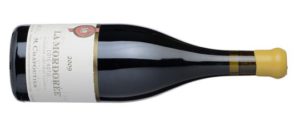
Michel ChapoutierMarius Chapoutier's grandson, and Max Chapoutier's son, takes over the company, which was in the shadows at the time. He built his international reputation on his northern Côtes-du-Rhône crus. He imposed biodynamic viticulture on his vineyards, and has been marketing his wines with the famous Braille label since 1996. Michel Chapoutier has multiplied his sales by twenty in twenty years! He is audacious and demanding when it comes to production quality.
Chapoutier's Cuvée Côte-Rôtie "La Mordorée" is essentially composed of Syrah from 60-year-old vines. This terroir develops on a soil of chlorite and ferruginous micaschists, mixed in depressions of loess and earth veins. The parcel in which this cuvée is planted lies on the edge of the Côte-Blonde. The wines are of incredible quality, with a deep red color, a nose of red fruits and floral notes. There are hints of raspberry, violet, exotic spices, black olives, tapenade and rosemary. Depending on the vintage, the wine can be cellared for 30 to 60 years.
Best vintages of Chapoutier's "La Mordorée": 1991, 2015, 2012, 2003, 2009
- TOP 7: Domaine Stéphane Ogier - Launch
Stéphane Ogier's "Lancement" vintage is 100% Syrah and comes from the southernmost end of the appellation (Côte-Blonde). Spectacular fruit, sweet berry, bacon, bell pepper and pheasant notes flow into a mouthful of sensation and length. Full-bodied and incredibly textured, this is a complex wine that develops incredibly well over the years.
Stephane Ogier's best vintages "Lancement": 2010, 2009, 2015, 2007, 2011
- TOP 8: Domaine E. GUIGAL - Château d'Ampuis
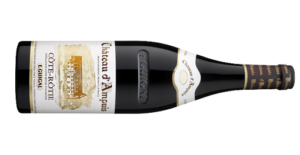
Château d'Ampuis by Maison Guigal is a great wine that will keep for at least 20 years in the cellar. Another great Côte-Rôtie, developed from 93% of Syrah and 7% of Viognier. These are very old vines, planted as far back as the 16th century. Maison Guigal produces around 30,000 bottles a year. This is an exceptional wine, with a deep, dark color and mauve highlights. On the nose, spicy notes and delicate woody aromas come through. It's dense, expressive and intense. On the palate, this is a racy, tannic wine. Aromas of prunes, blackberry and vanilla are also noticeable. Powerful, concentrated and structured on the palate.
Mbest vintages of Guigal "Château d'Ampuis": 2010, 2015, 2009, 2005, 2003
More than 50 wines and 15 vintages of Côte Rôtie in stock
- TOP 9: Jean Paul Jamet - Cote Rotie "Cote-Brune
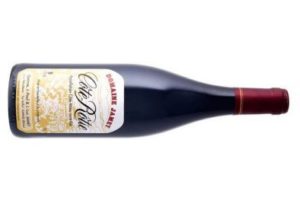
Since 1976, the Jamet estate has grown considerably. Jean-Paul Jamet began winemaking with his father Joseph in the 1976 vintage. Together, they developed the vineyard and wine-making process, but Jean-Paul was quick to take the initiative and make the choices. With forty years of winemaking experience behind him, he remains convinced that the richness of a wine lies precisely in its terroir. Far removed from successive fashions, he opts for blending the different expressions of Côte Rôtie to sublimate their complementarity. The house produces great Côte-Rôtie wines, renowned and sought-after by connoisseurs.
The " Côte-Brune" by Domaine Jamet is one of the best Cote-Rotie wines, and is the Domaine's only parcel selection. It was created in 1976. It's a complex wine based on 100% Syrah. It can be cellared for 20 to 30 years, depending on the vintage. It presents phenomenal notes of black raspberry, blackcurrant, olive tapenade, incense and bacon fat. Full-bodied, concentrated and textured.
Best Jamet "Côte-Brune" vintages: 2011, 2015, 2012, 2014, 2013
- TOP 10: Delas Frères - La Landonne
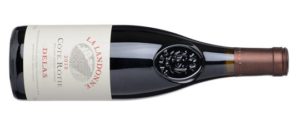
Since 1996, the Maison Delas Frères whose roots go back to 1835, has rediscovered the ambition that contributed to its renown. Under the impetus of new management, numerous investments have been made at the Saint-Jean-de-Muzols production site, near Tournon-sur-Rhône. A motivated team is proudly participating in the qualitative renewal of this Grande Maison of the Rhône Valley: a vat room specially designed for the vinification of red wines, and the complete restructuring of the ageing cellar are among the key elements of Maison Delas' quality approach, summed up in one phrase: perpetuating and sublimating the expression of Terroir.
Maison Delas' "La Landonne" cuvée is made from 100%. The first vintage of this cuvée dates back to 1997. This wine is only made in very good years. Production never exceeds 2,500 bottles. Intense color with violet highlights. A deep, complex nose, with notes of fruit, licorice and roasting. Ample and generous on the palate, with a persistent finish. Very high ageing potential.
Best Delas Frères "La Landonne" vintages: 2015, 2010, 2009, 2006, 1999
The top 10 Côte-Rôtie estates:
This (unofficial) ranking is provided solely on the basis of the scores of leading tasters.
-
Top 1: Domaine E. Guigal
Founded in 1946 by Etienne Guigal à Ampuis, ct's a small, ancient village and the cradle of the Côte-Rôtie appellation. It boasts a vineyard where vines and wine have been celebrated since 2400. years old. By the age of 14, Etienne had vinified 67 harvests of Côte-rôtie and also contributed to the development of Établissements Vidal Fleury. In 1961, despite his young age, he took over the reins of the estate from his father, who was suddenly struck by blindness. Bernadette and Marcel's son Guigal named Philippe is now the house oenologist. Together with his wife Ève, they represent the 3rd generation and continue the family legacy of serving the Great Wines of the Rhône Valley. They produced a single red wine, Châteauneuf du Pape. This wine is made from a blend of Grenache grapes with a minimum of mourvèdres. Some vintages feature Syrah.
-
Top 2: Domaine Jamet
The estate was founded in 1975 on the site known as "le vallin "In Côte-Rôtie, the soils are composed of schist and granite. This estate is the benchmark in the Rhône Valley. He has always combined style, balance and purity of wine. In 2015, Loïc, the eldest son, joined his parents Jean Paul and Corine on the estate. The vintage Côte-brunecomes only from the locality of Les Eponymes. The level of harvesting varies according to the vintage, except for the Côte-Brune whose production is 6 % from the estate, also including new woods. Both white and red wines were a hit. The wines are planted on 17 hectares and harvested by hand. The average age of the vines is 30 years. The red grape variety is composed of 100 % of Syrah and the white grape variety is composed of 45 % of Marsanne,45 % of Viognier, 5 % of roussanne and 5 % of white Grenache.
-
Top 3 : Domaine Rostaing
This is one of the best-known areas of the Côte-Rôtie. René Rostaing took over the reins of the vineyard from his father-in-law Albert. Dervieux Thaize and his uncle Marius Dervieux Thaize.He was able to expand his holdings in the northern Rhône, giving him one of the best terroirs in the region. Côte-Rôtie. This new vineyard is made up of three small plots in the "lieux-dits de la Landomme, Côte-Brune and Viallière. The development of his small initial plot helped René Rostaing to change career because he had enough vineyard land to become a full-time winemaker. Since 2007, the estate has been managed by his son Pierre. Rostaing. The estate currently owns 7.5 hectares of vines, spread over 20 different parcels in 14 different localities. Some of their old vines are elderly over 100 years old. It produces 5 different Côte-Rôtie : René Rostaing Ampodium, Rene Rostaing La Landonne, Rene Rostaing Côte Blonde, René Rostaing Cote Brune, René Rostaing la Viailliere.
- Top 4: Domaine Georges Vernay
This is a popular Rhone Valley estate best known for its Côte-Rotie and Condrieu. Christine Vernay who is part of the 3rd generation, succeeded his father and then his grandfather, and has been running the estate for over 20 years now. Visit 1937Francis created the estate and planted the first vines at a place called Coton de Vernon. Georges then took over from his father and saved the appellation. Condrieu. The estate comprises 24 hectares spread over the Condrieu AOC appellations, Côte-Rôtie and St Joseph. The estate has obtained organic viticulture certification thanks to its meticulous winemaking, regular planting and the use of organic methods. its selection massale from plants. The vines benefit from very good quality soils, such as Coton de Vernon is made up of gore (Arena) which is a decomposing granite, and the Chaillées of Hell. The Maison-Rouge vines are planted on granite soils to give them a more refined feel.
- Top 5 : Domaine Pierre Gaillard :
Created in 1980, Pierre Gaillard always wanted to be a farmer, even though he didn't come from that background. He bought his first plot of St Joseph's ( the clos de cuminaille) in 1981. He worked for Domaine Vidal Fleury and then Guigal when the house was bought, then over time, he bought small plots which he replanted and cultivated by hand. Syrah is his favorite grape variety. It is the northern Rhône Valley's unique red grape variety, with a very broad aromatic palette and supple, silky tannins. He also wanted to confront a totally opposite grape variety, Grenache, by going down to Languedoc and Roussillon. Over the years, parents have passed on to their children the passion for the wine. They eventually joined their parents and together they created the Pierre Gaillard family. The eldest, Jeanne, was the first to create her own wines in 2008, followed by Élise often helps his parents Collioure and the youngest, Pierre-Antoine, navigates between different domains, contributing his tastes and skills to the improvement of slope viticulture common to all 3 regions.
- Top 6: Jean Michel Gerin :
Visit family Gerin is located in the heart of the Côte-Rôtie vineyards in the village of Ampuis. This vineyard is à 30 km south of Lyon to the north of the Rhône valley and is the smallest in terms of surface area (280 km). ha. They specialize in the production of CondieuCôte-Rôtie, St Joseph and Vin de France. The traditional grape varieties used, such as Grenache and Carigan bring out the full expression of these century-old wines. A portion of Syrah has also been planted, and the 6 ha vineyard is situated between 300 and 500 m above sea level. It is an indispensable element that is often mixed with the viognier to enhance the taste of the wine. The plantation at "la Viallière " began in 2003 on the land of Côte-Rôtie. It's a fairly substantial job, carried out on slopes ranging from 40 to 60 %. In 2009, the first bottles of the vintage appear. In 2014, a new vat room was built to improve wine quality. Over the past 10 years, the estate has expanded to cover a total of 16 ha. Since 2020, the estate has been certified Hv3 and has also begun the transition to organic farming.
- Top 7: Domaine Stephane Ogier :
In the past, Michel OgierThis estate doesn't really have a long history in the appellation. Côte-Rôtie. The family Ogier has been in existence for 7 generations on the hillside of Ampuis, the Côte-Rôtie's flagship village. They started slowly, buying vineyards and selling their crops. Their vines were planted on the Côte-Rozier and until 1982the wine was sold to traders. The two largest customers were Guigal and Chapoutier; from this moment they began by building their brand. Today, Stéphane Ogier is at the helm of several of the estate's decisions. This winegrowing estate in northern Rhône introduced other new cuvées, including Ogier Lancement, Ogier Embruns and Ogier Belle Héléne. The wines are made from 100 % of Syrah, including 70 % of Côte-brune and 3 % from Côte-blonde.
- Top 8: Domaine Barge
Julien Barge decided to follow in the footsteps of his father and grandfather, while preserving the values of the family tradition. Over the years, the estate has grown in popularity, becoming one of the world's leading reference. In 2019 Gilles and Alice go to retired and decide to entrust the management of the estate to their son Julien. The domaine produces Côte-Rôtie wines with a distinctive traditionalfresh and solid. The grapes are fermented entirely without destemming, except in complicated vintages. The vines are over 50 years old and the old vines were cultivated in the Baleyat in 1946. Vinification takes place in vats of different sizes: 228 liters, 550 liters of half-weights and used oak barrels ranging from 12 to 25 hectolitres.
- Top 9: Domaine Duclaux
Founded in 1928, the Duclaux estate was bought out by the great-grandfather, but progressed mainly thanks to the father Edmond Duclaux. From 1980 onwards, the success of Côte-Rôtie begin. Today, his heirs, the Ducaux brothers, cultivate the terroir by hand. The estate covers 5.8 hectares of vines and includes the following hillsides from Tupins and Semons and the soils are typical of the southern part of the AOC Côte-Rôtie : from Gneiss. The estate specializes in the production of great red wines, including the cuvées : Côte-Rôtie Benjamin and David DuclauxCôte-Rôtie La GermineCôte-Rôtie Maison-Rouge. Since 2014, they also produce white wines: Condrieu "The Curds".
- Top 10: Domaine François villard :
The estate was founded in 1989 by François Villard who continues to run the estate to this day. He trained as a chef, but discovered his passion for wine when he was 20. He obtained a professional sommelier diploma in tain l'Hermitage and then obtained a vocational agricultural diploma, with a viticulture and oenology option. In the meantime, he began to see his first overgrown plots of land in the commune of St Michel en appellation. Condrieu. In the spring of 1989, he planted his first vineyard as soon as he had obtained his patent. In 1991, he produced his first Condrieu and in autumn 1992, the first 400 bottles were put on the market. The estate is located in the Rhône Valley in Condrieu and has 25 hectares of vines aged 15 years or more. Know-how and experience makes of Condrieu's greatest winemakers. It currently boasts 21 cuvées.
Also worth knowing:
-
Domaine Pierre Jean Villa :
This domain was created in 2008 and has gone from strength to strength. It has grown without losing its philosophy: to produce its signature wines. For red wines, the proportion of vintages vary according to the cuvées. Basically, Pierre never inherited any vines. it participated in the harvest, visited cellars, tasting wines, working with winemaking buddies. In 2003, Pierre-Jean villa joins the trio of Vienna wines until 2009. In 2009, he finally set up his own estate in the heart of the Northern Rhône, and began his new profession as a totally independent winemaker. In 2020, the estate was ranked as one of the top addresses in the Northern Rhône, with 17 hectares on the left and right banks of the Rhône.
- Domaine du Monteillet :
The Monteillet has belonged to the de Villard family since the 17th century, represented by Louis Hector. As the time the Stéphane's ancestors go to began to integrate into the world of wine by working the vines and buying up plots and land on the estate. The grapes are picked by hand, in small crates, and when ripe are transported quickly and carefully to preserve their color, smell and taste. Today, Stéphane Montez has taken over the running of the estate from his father Antoine, who taught him all about wine. They plant their wines on 38 hectares of land and four appellations. The hillsides are laid out in terraces supported by low dry stone walls called chaillées. This is where or the vine flourishes and forms thanks to its exposure to the sun. south/southeast.
- Domaine Levet :
It was founded in 1929 in Ampuis and has a vineyard in Côte-Rôtie. It is made up of various plots of land located in high-potential localities. Agnés levet follows in his father Bernard's footsteps and continues to perpetuate his work. The wines are destined to be aged following part of the vinification with whole grapes, long maceration and two years of ageing. The wines have evolved since 2017, with a more expressive touch and a sunny side that stands out more. In 2018, the fruit is juicier and the difference is more marked by the soils. The palate has a more serrated. The surface area of the vineyard where the red wines are planted is 4.30 hectares, harvested by hand.
- Domaine Clusel Roch :
From the 50s to the 80s René and Joséphine clusel grew many vegetables, fruit trees and Côte-Rôtie vines. Later, they sell bottled wines. Wines did not enjoy a good reputation in those days, but René's wines Clussel were popular with consumers. Years after Guillaume Clusel Brigitte and Gilbert's son joined the company and worked the family vineyards in 2009. It is currently managed by Guillaume Cluset and his parents Gilbert and Brigitte. The estate comprises 20 ha of vines in the 3 historic crus of the Lyonnais region: Ampuis (AOC Côte-RôtieAOC Côtes-du-Rhône and Vin de France), Condrieu (AOC Condrieu)Millery (AOC Coteau du Lyonnais).f

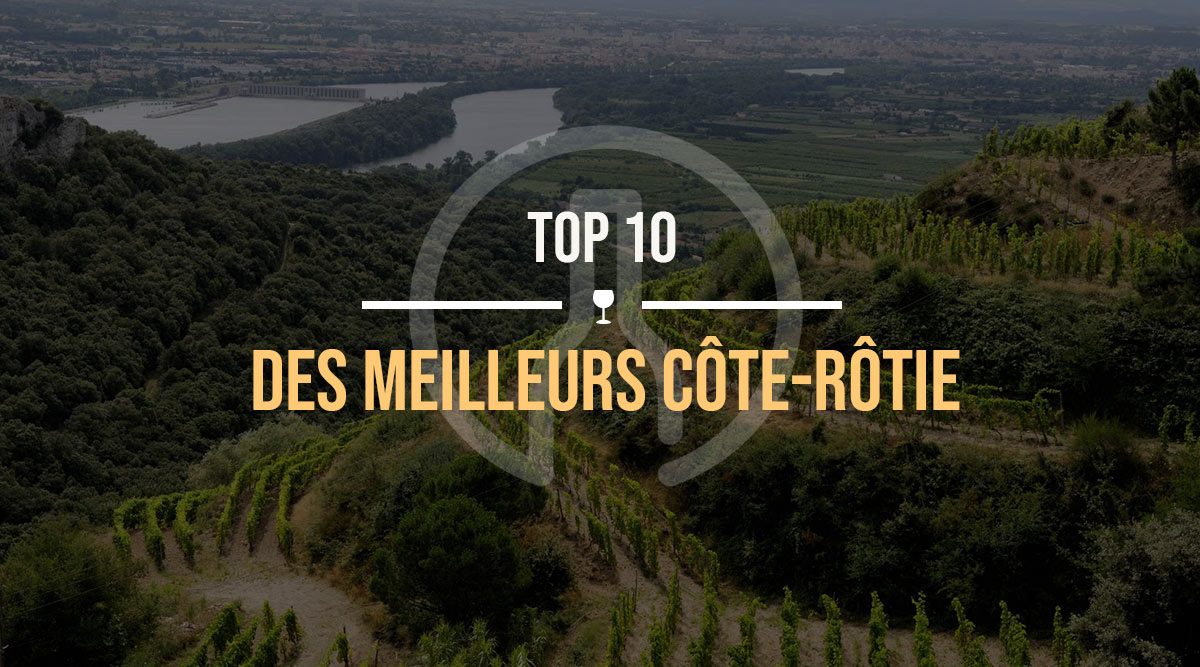





![✨ Comptoir des Millésimes honors Champagne's great winemakers ✨[LINK TO THE ORGANIC CELLAR]We've selected 11 exceptional estates that reveal the full richness of Champagne terroir through unique, refined cuvées. Hugues Godmé - In Verzenay, this family-run biodynamic estate offers precise, vibrant champagnes with a beautiful mineral tension.Egly-Ouriet - A benchmark for the Montagne de Reims, its powerful champagnes, aged for long periods in barrel, impress with their complexity.Moussé Fils - In Cuisles, the Meunier grape is king. Pertois-Moriset - Pure, taut Chardonnay Grands Crus for lovers of chalky finesse. A fine address in Mesnil-sur-Oger.Geoffroy - In Aÿ, this domaine produces fine champagnes, carefully crafted and barrel-aged to reveal the full complexity of the terroir.Larmandier-Bernier - Biodynamic viticulture, exceptional parcels and purity. Crystal-clear, intense champagnes for connoisseurs.Roger Coulon - Eight generations of expertise at Vrigny. Balanced, subtle and elegant champagnes.A. Bergère - In Avize, a dynamic house offering expressive, fruity and accessible cuvées.Adrien Renoir - A promising talent from Verzy, he produces fine, complex champagnes with a true sense of terroir.De Sousa - Emblematic house in Avize. Richness, depth, long ageing: Chardonnay at its peak.Pierre Paillard - In Bouzy, the family magnifies Pinot Noir with vinous, racy and sincere cuvées.📦 Order now on our website#ComptoirdesMillésimes #Champagne #VigneronsIndépendants #GrandVin #ChampagnesdeTerroir #LivraisonRapide](https://www.comptoirdesmillesimes.com/blog/wp-content/plugins/instagram-feed/img/placeholder.png)